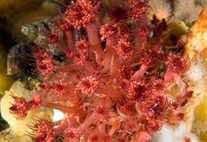Abstract
In studies of haemosporidian systematics and taxonomy, a combination of microscopic examination and molecular iden-tification has been recommended. The yellow wagtail (Motacilla flava) is a frequently used species in studies of host-par-asite interactions; blood parasites of this bird have been well studied using microscopic examination of blood films, but data on molecular characterization of the parasites are scattered. Here we present the first study linking several haemospo-ridian cyt b sequences with their morphospecies parasitizing the yellow wagtail, combining light microscopy and nested PCR methods. The lineage hYWT1 of Haemoproteus motacillae was the most prevalent parasite; it was recorded in 38% of the birds. The latter lineage and the lineages hYWT2, hYWT3, hYWT5 and hYWT6 form a well-supported clade on the phylogenetic tree and likely represent intraspecific genetic variation of H. motacillae, with genetic divergence of 0.3– 1.5 % among these lineages. Microscopic examination of smears prepared during an in vitro experiment, which was de-signed for observation of developing ookinetes, showed that H. motacillae ookinetes were present 5 hours after exposure of blood to air at 18–20º C. Ookinetes of this parasite belong to a group of large Haemoproteus spp. ookinetes (19.9 μm in length on average). Illustrations of the parasites are given. Two of reported Plasmodium lineages, pCOLL1 and pYWT4 are phylogenetically closely related to the widespread host generalist parasites Plasmodium relictum (cyt b lineages pSGS1, pGRW4 and pGRW11), but it was not possible to establish this morphologically. This study contributes to the molecular identification of avian haemosporidian parasites and provides information on morphology of H. motacillae ookinetes, which is additional information assisting the microscopic identification of this species.

